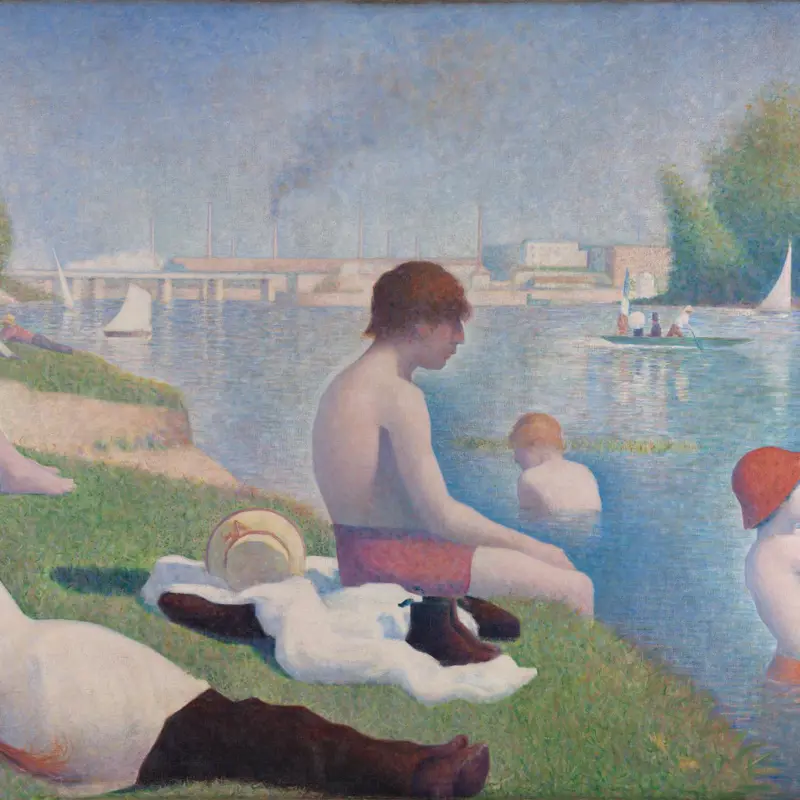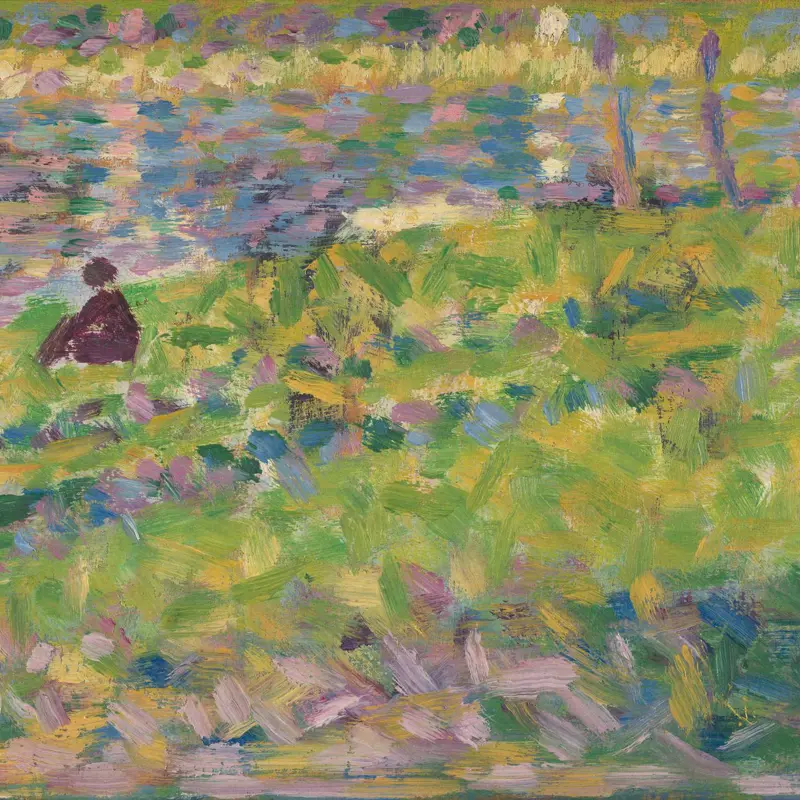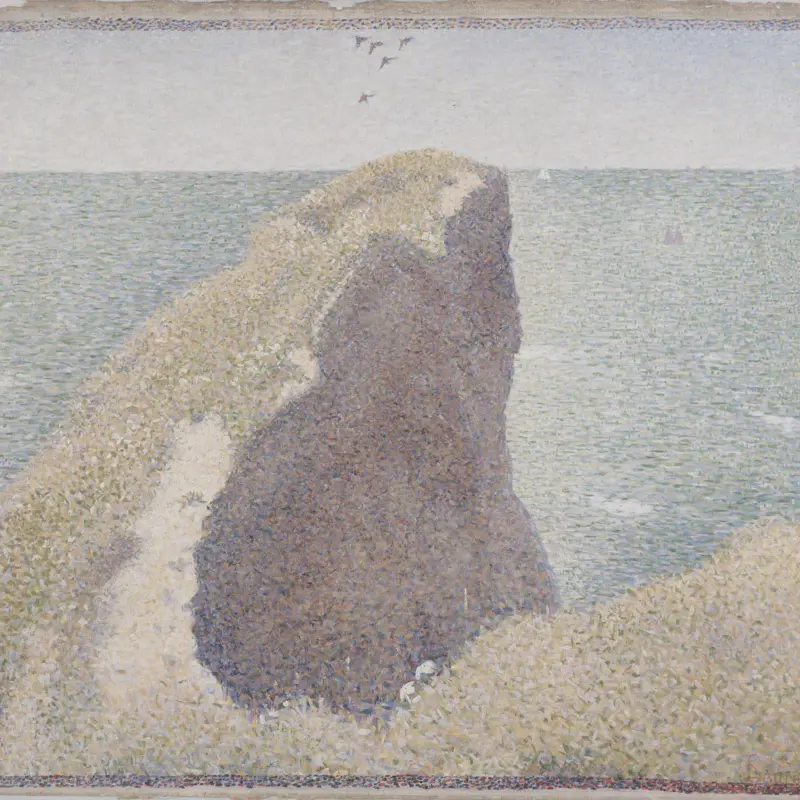Seurat is considered one of the most important Post-Impressionist painters. He moved away from the apparent spontaneity and rapidity of Impressionism and developed a structured, more monumental art to depict modern urban life.
'Bathers at Asnières' is an important transitional work. It shows him developing the application of his novel pointillist technique to a large work on the scale of History painting.
At the start of his career, Seurat followed a traditional path: taught to paint by a pupil of Ingres, Henri Lehman, at the École des Beaux-Arts in Paris; studying the works of early Italian and 17th-century French artists in the Louvre; and then exhibiting at the official Salon. His drawings in Conté crayon allowed for very subtle tonal gradation; they shimmer in a manner akin to the effect created by Seurat's pointillist painting technique.
Seurat combined a traditional approach, based on his academic training, with a study of modern techniques, such as Impressionism. He also applied ideas from contemporary optical theories of colour relationships. Seurat's disciplined work, which contrasts with that of many of his Impressionist contemporaries, was very influential.












